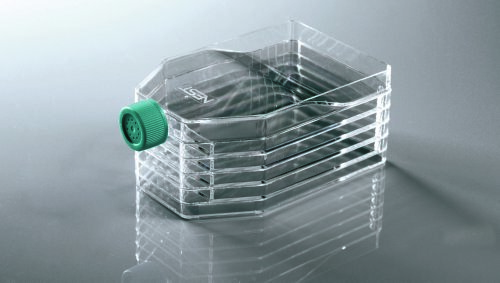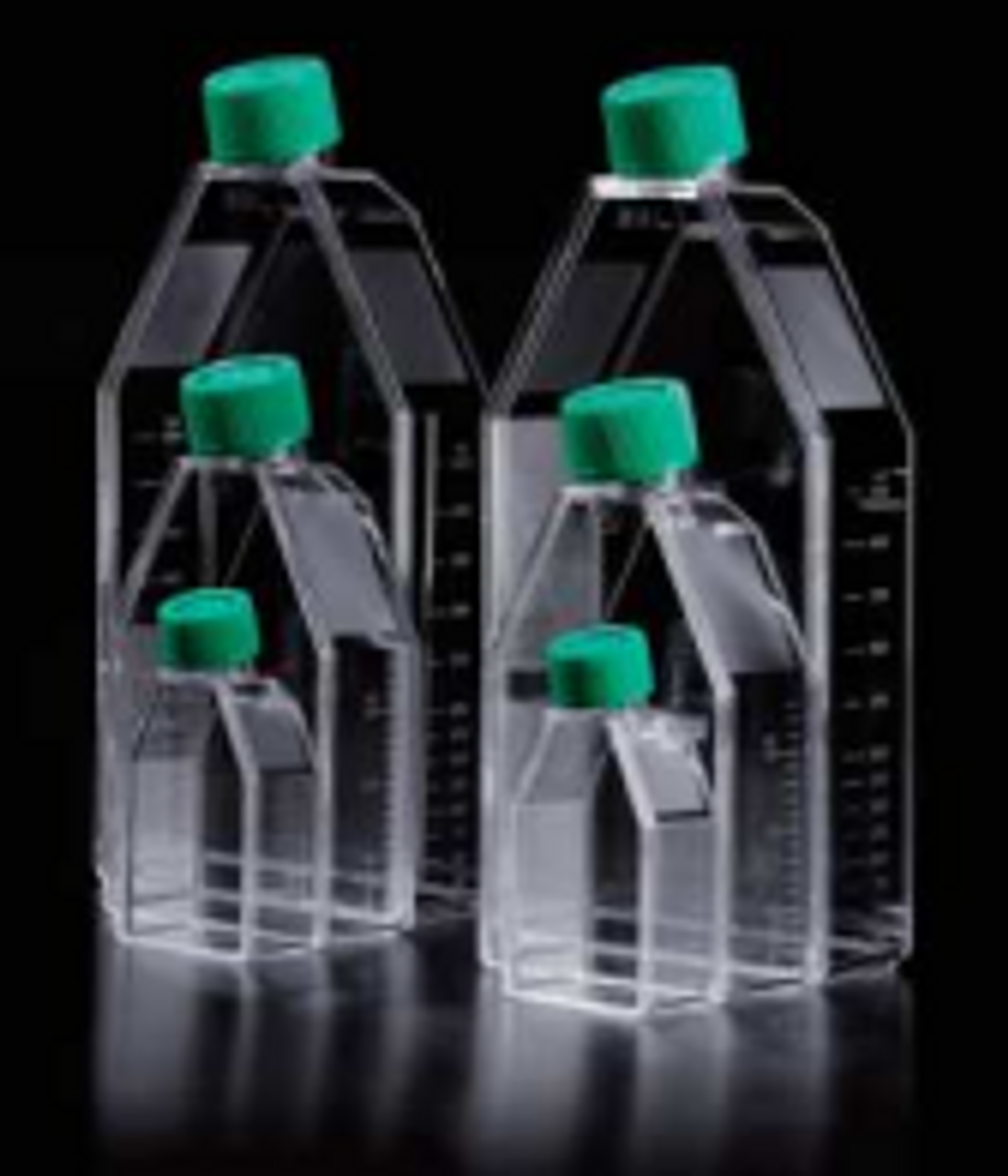Culturing and growing human cells is a basic activity done
by many research laboratories.
Growing human cells outside of the body is a delicate process which requires the right tools and conditions.
Many kinds of plastic devices have been developed for cell culture depending on the types of cells to be cultured and the research goals.
What materials are used for making cell culture plastics?
Cell culture plastics are often made from virgin polystyrene, a petroleum product with naturally low binding properties which allow for excellent liquid recovery.
Polystyrene also has a crystal-clear surface for maximum light pass-through when viewing with microscopes.
What are common formats of polystyrene cell culture plastics?
Polystyrene cell culture plastics for growing mammalian cells are available as multiwell plates, dishes, flasks and chamber slides.
Multiwell Cell Culture Plates:
A cell culture plate is a square or rectangular plate with divisions, or wells, to observe changes to the same cells when different experiments are performed.
Cell culture well plates have as few as 4 wells, or as many as 384-wells. The most common versions are six-well, twelve-well, twenty-four well and ninety-six well plates.

Multiwell plates usually have very flat bottoms, but ninety-six well plates can be made with round bottoms as well.
Multiwell plates come with tight fitting lids which protect growing cells from contaminants and reduce evaporation of media.
Multiwell plates may be clear or have white walls for luciferase assays or black walls for fluorescence assays.
Cell Culture Dishes:
When growing colonies of cells, choose a round cell culture dish with walls and lid. Cell culture dishes range in diameter from 35mm up to 150mm.
Cell culture dishes have exceptionally flat surfaces, and some versions feature glass bottoms, usually a round microscope cover glass glued to the base, for viewing cells with confocal microscopy.

Cell Culture Flasks:
Unlike cell culture plates or cell culture dishes, cell culture flasks can be tightly closed with a screw-cap top. A well sealing cap prevents evaporation and provides additional protection against spillage.
Cell culture flasks can be closed completely with a plug cap when anaerobic growth is needed or vented with a 22 micron membrane to permit gas exchanges while keeping out contaminants.
How are cell culture flasks measured?
Cell culture flasks range in sizes measuring the total growth surface in square centimeters or maximum media capacity.
T25 cell culture flasks offer 25cm2 of growth surface and have a capacity of 50mL
T75 cell culture flasks offer 75cm2 of growth surface and have a capacity of 250mL
T225 cell culture flasks offer 225cm of growth surface and have a capacity of 700mL
To significantly increase capacity without increasing the footprint, a cell culture flask can be multilayered.
This popular 5-layer cell culture flask from NEST Scientific takes up the same amount of incubator space as a T175, but offers 870cm2 of total growing surface!

Cell culture chamber slides:
Imagine a glass microscope slide with a little building on top and you have a picture of a cell culture chamber slide.
Chamber slides can be a single chamber, double or quad chamber, all the way up to eight total chambers.
Cells are grown separately and once they proliferate, the walls can be removed to allow cells to interact.
Chamber slides can have clear walls, white walls or black walls depending on the application, similar to multiwell cell culture plates.

When do I use a treated cell culture plastic or non-treated?
When growing cells that must cling to a surface to proliferate, choose cell culture plastics that has a treated surface.
Vacuum gas plasma is a very common tissue culture treatment for growing adherent cells.
Cell culture plastics treated with vacuum gas plasma remain potent for several years and do not require refrigeration.
When growing suspension cells, spheroids or organoids, choose cell culture plastics with no treatment.
These cells need to float in the medium to develop correctly.
When purchasing cell culture plastics, pay close attention to the product name and description to make the right choice for the right cells.


